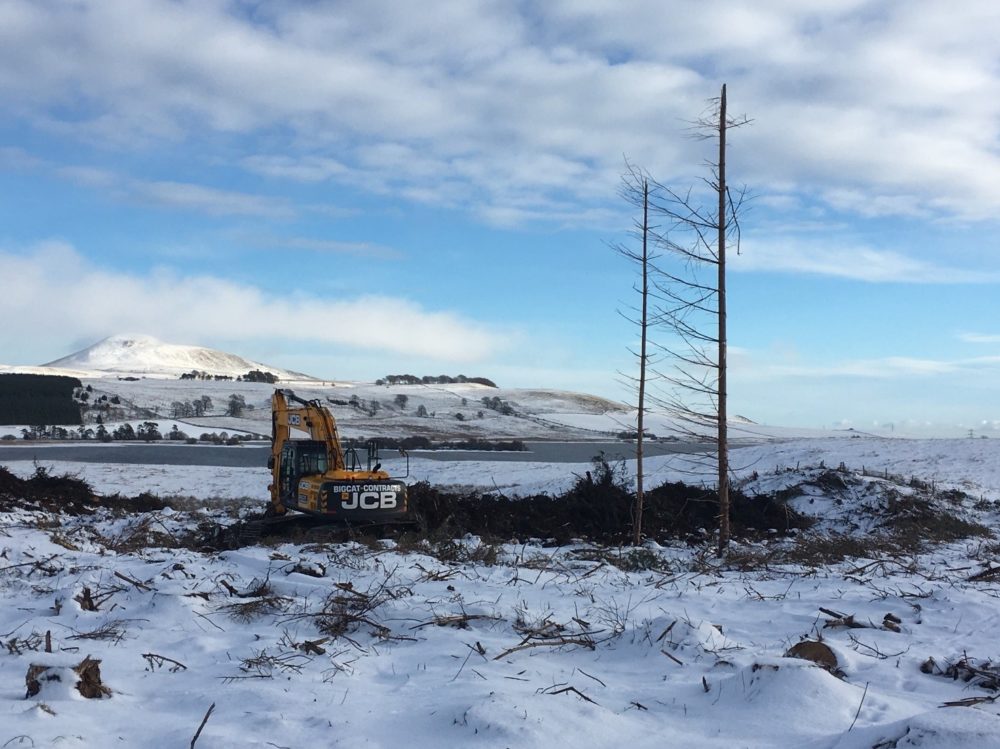I attended a seminar last October run by Scottish Forest and Timber Technology which looked at how best use could be made of contractor resource in the forthcoming planting season. The message from speakers from nurseries, ground preparation and planters was pretty straightforward – book early to avoid disappointment. I was, by this stage, a veteran of some three months in the industry and solemnly undertook to follow this advice.
Easy enough? No!
Here is a list of reasons why I have broadly failed to ‘Book early to avoid disappointment’ in this, my first planting season.
1) A lot of planting (or restock) jobs rely on income from grants. These need to be approved before work can begin. For restock, harvesting needs to be finished before restock ground prep can begin. Harvesting often can’t start until breeding bird season is over- late summer.
2) Given that the planting season can only begin once the nurseries start lifting the trees (once the weather turns cold enough to bring about dormancy), we can’t start planting before broadly, mid-November. Unless harvesting has taken longer than expected.
3) Planting season ends once the trees are judged to have missed out on too much of the growing season for it to be worth planting them. The warmer temperatures, lower rainfall, and increased competition from weeds means that planting finishes in the early summer (ish).
4) Everybody wants to get their planting done early because the trees are slightly cheaper, the ground isn’t frozen and you have plenty of time left if something doesn’t work out. As a result, contractors are much in demand and (quite reasonably) prioritise the bigger planting jobs.
5) By the time the bigger jobs are out of the way and Christmas is finished, the planting season is well underway. This year we got a good run of about 6 weeks before a fortnight of snow and a further fortnight of frozen ground. It’s now mid-march and the clock is audibly ticking.
6) Mid to late March is the time of end of year invoicing and budget preparation for the following year. I slightly take my eye off the planting ball at this point.
7) Mid-April – I’ve now got my head around invoicing and budgeting. The weather has taken a turn for the spring-like (finally). But this is problematic – the warmth will break the young trees’ dormancy and they could start to grow before they’re in the ground. I can no longer afford for trees to be sitting out for a few days before planters get to them. The planters don’t want to get to the site and wait for the trees to arrive. The trees have a lead time of about ten days and the planters won’t commit to start a week next Tuesday because they have several other jobs that are due to begin any day now and will start whichever job comes up with the trees first.
8) Early-May. Extended winter and shortened spring now evolving rapidly into droughty early summer. The planters are up against it getting trees into the ground as it dries out. A few last bits-and-pieces jobs and beat-ups which have firmed up late in the season get finished off as the sun beats down.
9) Early-June. No rain for a month on some sites. I’m calling it – the projected rate of losses is now too high to justify the expense of planting. The jobs that were missed will need to wait until next season, which will add to the burden at the beginning of next season.
I’ve learned so much in the last six months that will help me in the coming planting season but, as the above hopefully demonstrates, the path to tree planting happiness rarely runs smooth. Leaving me with the big question – Will I ever ‘be able to book early to avoid disappointment’?
Mike Page
Assistant Forest Manager
Image: The challenging task of ground preparation in Central Fife during the cold weather.



